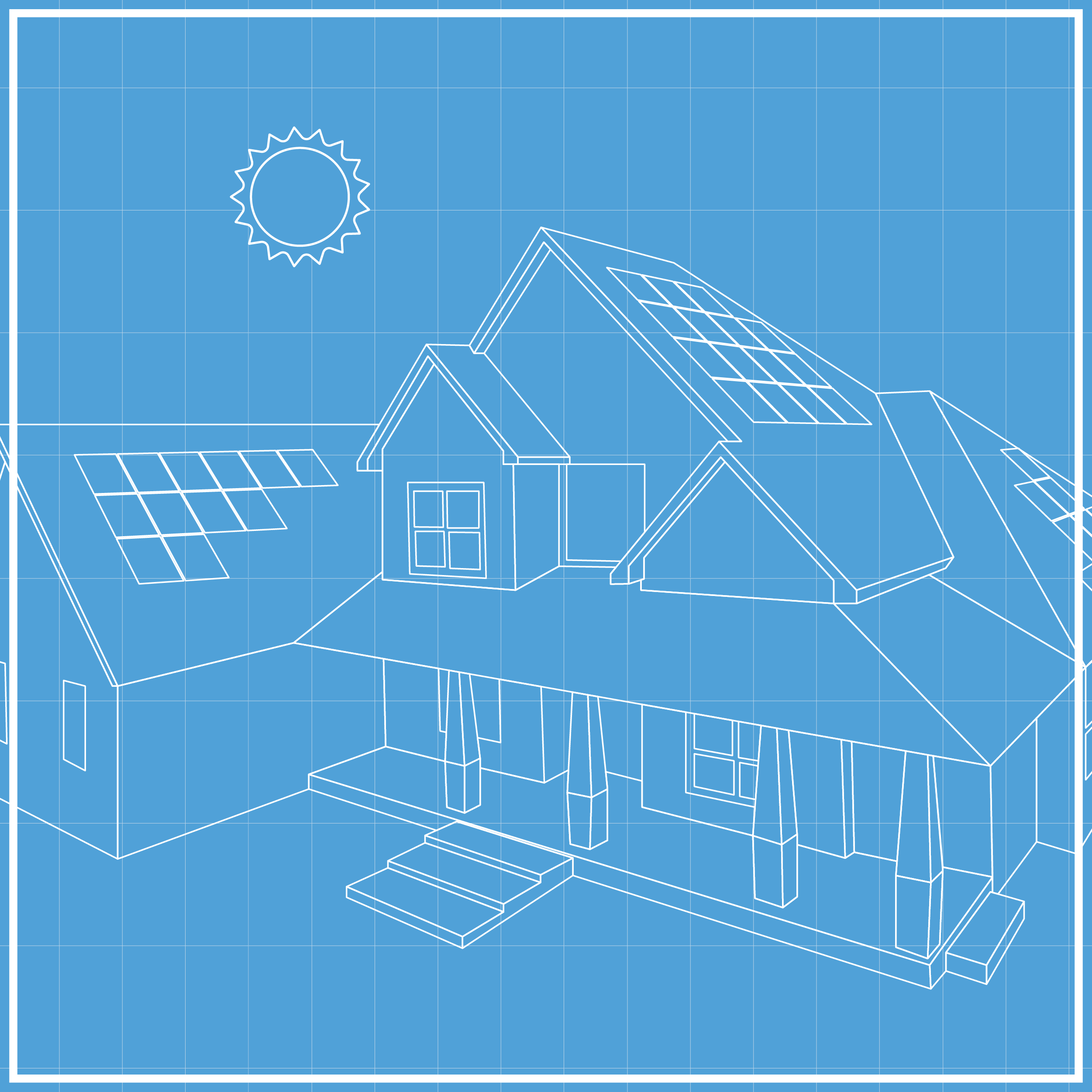
Residential solar panels are becoming more common. With every year, they cost less and produce more energy. There has never been a better time to invest in a solar panel system, and many homeowners are rushing to put a new system on their roof. Interestingly, many people are willing to put thousands of dollars into solar before they know how their solar panels work.
At Blue Raven Solar, we want our customers to know their rooftop solar panels will produce electricity, save money, and help the environment, but we also want every customer to have a basic understanding of how their solar panels operate.
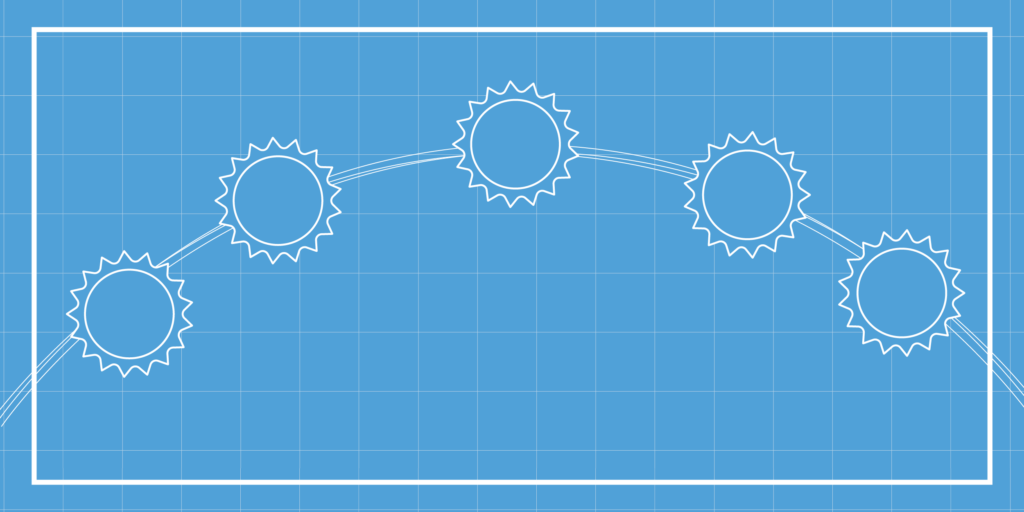
What is Solar Energy?
Solar energy is radiant light and heat from the sun that is harnessed using photovoltaic cells and solar panels to convert sunlight into solar power, or electricity. This renewable energy source is abundant, environmentally friendly, and sustainable. Solar energy systems are great for powering homes, offering a versatile solution to meet energy needs while reducing reliance on traditional fossil fuels and mitigating climate change.
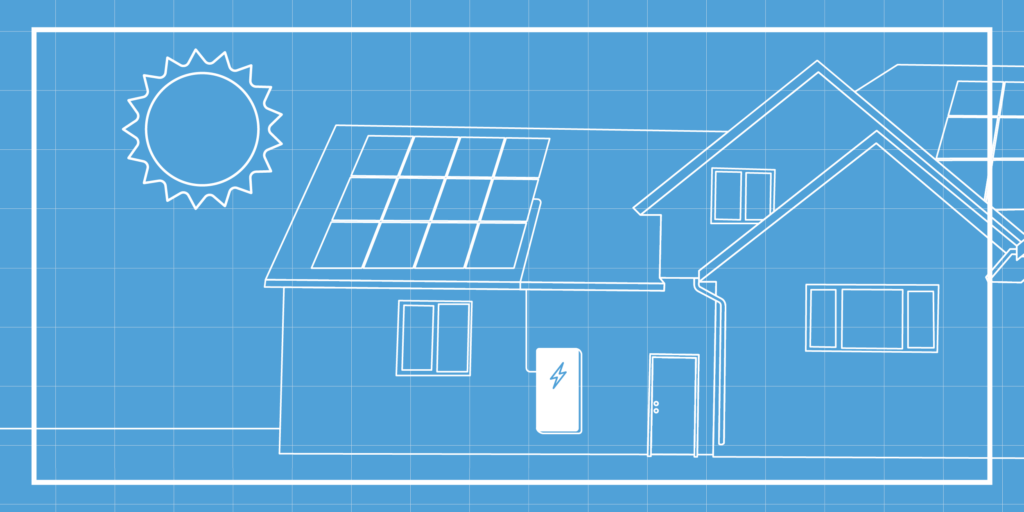
How Do Solar Panels Produce Energy?
Solar panels generate energy by converting sunlight into electricity through the photovoltaic effect in silicon-based solar cells. Sunlight energizes electrons in the cells, creating an electric current. This current is collected by metal contacts and transferred to an external circuit, providing usable electrical power.
To better illustrate how the PV effect turns light from the sun into electricity, let’s break it down:
- Sunlight Hits the Solar Panels: Solar panels are made up of many small units called photovoltaic (PV) cells. These cells are typically made from silicon, a semiconductor material. When sunlight hits the solar panels, it strikes the PV cells.
- Generation of Electrical Current: The sunlight is composed of tiny particles called photons. When photons hit the PV cells, they knock electrons loose from the atoms in the silicon.
- Creation of an Electric Field: The PV cells are designed with a positive and a negative layer, which creates an electric field. This field forces the freed electrons to move in a particular direction, creating an electric current.
- Collection of Electrical Current: Metal conductive plates on the sides of each PV cell collect the electrons and transfer them to wires. This flow of electrons through the wires is direct current (DC) electricity.
- Conversion to Usable Electricity: Solar panels generate direct current (DC) electricity, which needs to be converted to alternating current (AC) electricity to be compatible with most homes and businesses. An inverter performs this conversion, making the electricity from the solar panels usable for powering electrical devices.
- Distribution and Use: The AC electricity is then sent from the inverter to your electrical panel (also known as a breaker box). From there, it is distributed throughout your home or business to power lights, appliances, and other electrical devices.
- Surplus Electricity and Grid Connection: If your solar panels produce more electricity than you use, the surplus can be sent back to the power grid (if you are connected to it), and you might receive a credit from the utility company. This process is called net metering. If your utility company does not participate in net metering, or you do not want to send excess energy back to the grid, a solar battery can be installed to store that energy for later use.
With a basic understanding of how solar panels generate energy, you can better determine if solar is the right decision for you and your home.
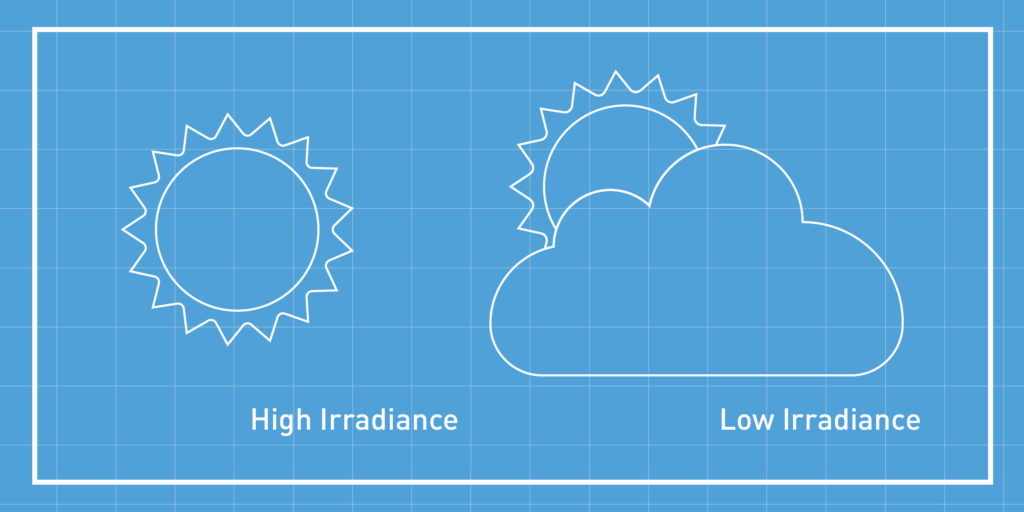
Solar Irradiance
Solar irradiance is the measure of the power per unit area received from the sun in the form of electromagnetic radiation. It is an important way to determine the performance and efficiency of solar panels, as it directly influences the amount of energy they can convert. Solar irradiance varies significantly with geographic location, time of year, and weather conditions. Regions near the equator receive more consistent and intense sunlight throughout the year compared to higher latitudes, where the angle of the sun’s rays is lower, and daylight hours vary more with the seasons. During winter months, higher latitudes experience shorter days and lower irradiance, reducing solar energy production.
Weather conditions also play a significant role in solar irradiance. On clear, sunny days, solar panels receive maximum irradiance, while cloudy or overcast conditions can drastically reduce the amount of sunlight reaching the panels. Additionally, atmospheric phenomena such as dust, pollution, and aerosols can scatter and absorb sunlight, further impacting irradiance levels. Understanding these variations is essential for optimizing solar power systems.
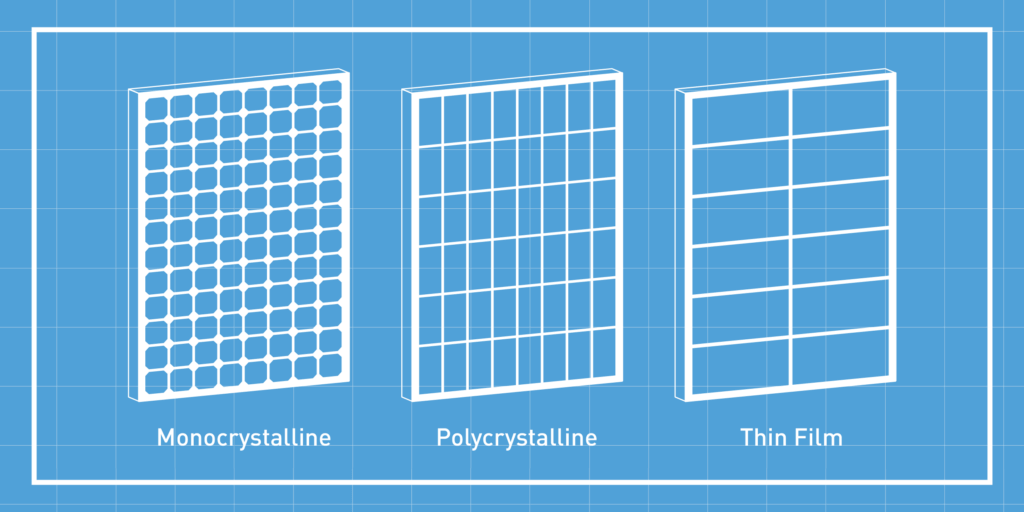
Three Main Types of Solar Panels
There are a few main types of solar panels and choosing the right ones can make a big difference to how efficiently your solar energy runs throughout your home. Solar panels differ in appearance, technology, efficiency, cost, and warranties. It is important to investigate which solar panels will work best on your roof.
Monocrystalline, polycrystalline, and thin film solar panels are the most popular solar panel types available for installation. Here are advantages to each type:
- Monocrystalline solar panels are made from crystalline silicon. They are the most expensive because they are the most space efficient, allowing them to generate more electricity per square meter compared to other types. Additionally, their higher efficiency rates make them ideal for situations where installation space is limited, such as rooftops. Despite the higher initial cost, their durability and longer lifespan can lead to greater long-term savings and energy production.
- Polycrystalline solar panels work like monocrystalline solar panels, except they are larger and less expensive.
- Thin film solar panels use a different technology than crystalline silicon panels. The technology for this type of solar panel is still in development. Currently, they are the least energy efficient solar panel, but they are expected to improve in coming years.
Solar Panel Advancements
Advancements in photovoltaic technology have significantly increased the efficiency of solar energy systems. One notable development is the creation of perovskite solar cells, which offer high efficiency and lower production costs compared to traditional silicon-based cells. Additionally, bifacial panels, which can capture sunlight from both sides, enhance energy capture by utilizing reflected light from surfaces such as roofs and the ground. These innovations promise to further boost the efficiency and adoption of solar energy, making it a more viable and widespread solution for sustainable power generation.
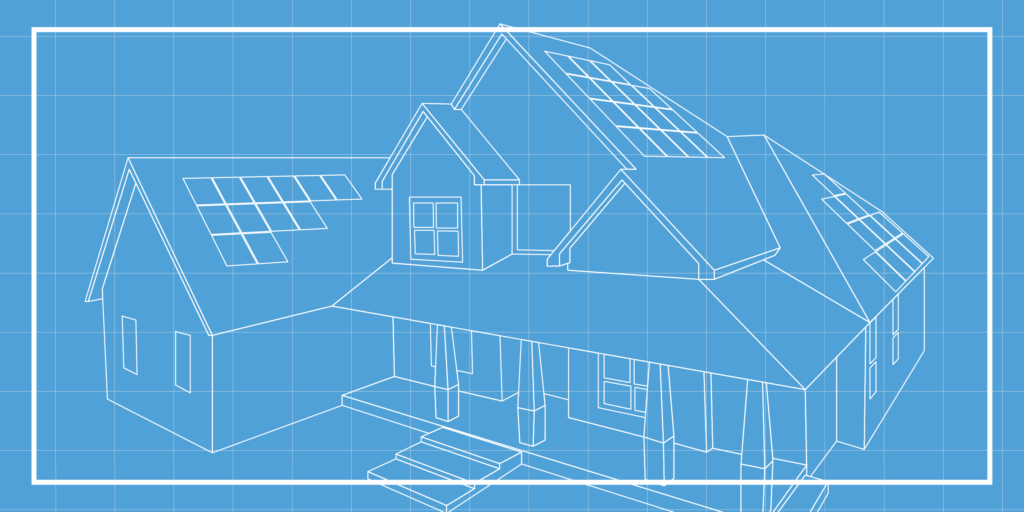
The Blue Raven Solar Advantage
One of the biggest advantages of getting solar panels from Blue Raven Solar is working with a highly experienced company that will help you navigate the complicated world of solar energy. We take pride in being one of the top solar panel companies in the nation. We use quality technology that guarantees results for our customers.
Blue Raven Solar uses high-quality, monocrystalline, tier-1 black solar panels for all residential installations. Our modern PV panels blend seamlessly with your roof, offering a premium look. Each system is customized to fit your home, budget, and lifestyle. Our solar panel installations come with a 25-year warranty on solar equipment, a 10-year workmanship warranty, and a roof penetration warranty. We also offer a two-year production guarantee.
Want to invest in quality solar technology? Read what our customers are saying about our services.



Sorry, the comment form is closed at this time.